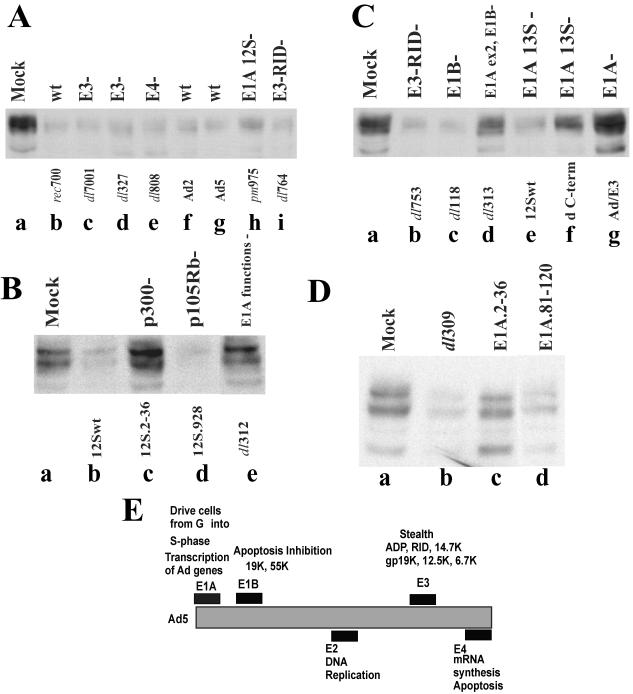FIG. 2.
The E1A 13S or 12S protein, including amino acids 2 to 36 and the CtBP binding site, is required to downregulate the TβRII protein in adenovirus-infected cells. A549 (A and B) or HepG2 (C and D) cells were infected with wild-type (wt) or mutant adenoviruses at 50 PFU/cell. Cell lysates were harvested at 24 h p.i. for the wild type and most mutants and at 48 h p.i. for dl313, 12Swt, dC-term, Ad/E3, 12S.2-36, 12S.928, and dl312. Cell lysates were subjected to Western blotting with anti-TβRII antibodies (Santa Cruz Biotechnology). (E) Schematic of the adenovirus (Ad) genome. The E1A proteins activate the transcription of adenovirus genes and deregulate the cell cycle by suppressing or activating cellular proteins and genes. E1B proteins suppress cellular apoptosis. E3 proteins confer a stealth function to the virus by inhibiting immune cell-mediated apoptosis. E4 proteins function in gene regulation, in part by facilitating degradation of p53; they are also required for viral mRNA transport from the nucleus. Virus DNA replication is necessary for late protein synthesis derived from the major late transcription unit. At about 24 h p.i., virions begin to assemble in the cell nucleus, and after 2 to 3 days cell lysis begins to occur, with the release of virions.

